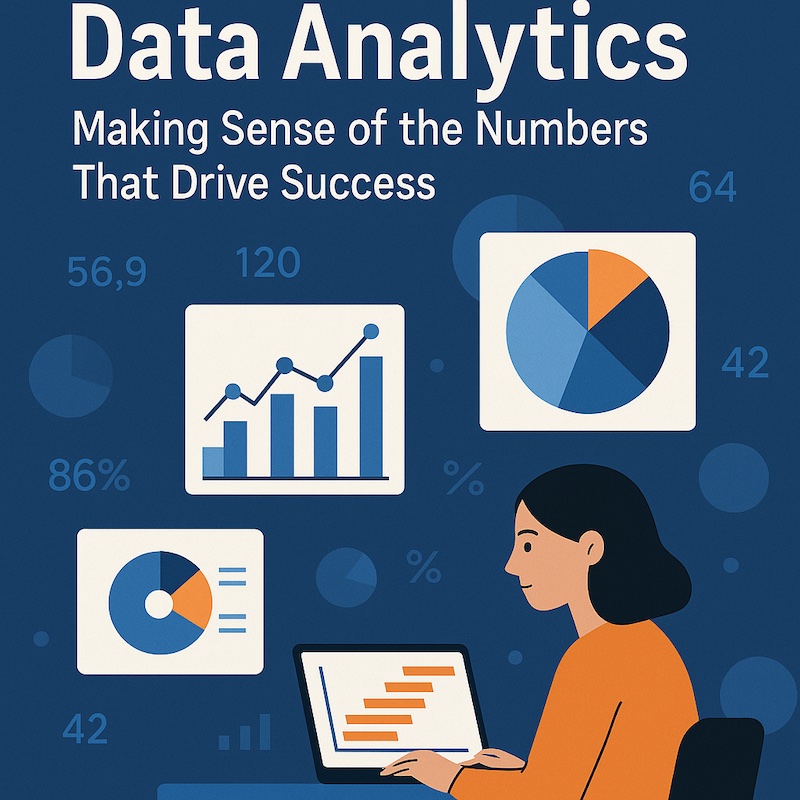Numbers that drive success
2025-08-13 • data analytics

We live in a world overflowing with information. Every click, purchase, and online interaction leaves a trail of data — but raw data on its own isn’t very useful. That’s where data analytics comes in. It’s the art (and science) of turning numbers into meaningful stories that help us make smarter decisions.
Whether you’re running a small business, managing a large team, or simply curious about how data shapes the world, understanding analytics can be a game-changer.
So, What Exactly Is Data Analytics?
Think of data analytics as detective work for your business or project. You gather clues (data), clean them up, look for patterns, and figure out what they’re trying to tell you. There are four main ways analytics helps you make sense of things:
- Descriptive Analytics – Looking back: What happened? (e.g., “Last month’s sales increased by 15%.”)
- Diagnostic Analytics – Finding the cause: Why did it happen? (e.g., “Sales went up after we launched our new ad campaign.”)
- Predictive Analytics – Peeking ahead: What’s likely to happen next? (e.g., “Sales will probably rise again during the holiday season.”)
- Prescriptive Analytics – Taking action: What should we do about it? (e.g., “Let’s increase inventory before December to meet demand.”)
Why Should You Care About Data Analytics?
In simple terms: it helps you make better decisions, faster.Here’s how:
- Confidence in choices – Say goodbye to gut feelings and hello to facts.
- Spotting opportunities – See gaps or trends before competitors do.
- Saving money – Find and fix inefficiencies.
- Personalizing experiences – Give customers exactly what they want, when they want it.
How the Magic Happens: The Analytics Process
- Collect the data – From websites, surveys, social media, sensors… basically, anywhere information is stored.
- Clean it up – Remove duplicates, errors, or irrelevant details so the data makes sense.
- Analyze it – Use statistical methods, algorithms, or even machine learning to uncover patterns.
- Visualize it – Transform these patterns into charts, dashboards, or reports that are easy to understand.
- Take action – Make informed choices and track the results.
Tools of the Trade
- Excel – Quick, simple, and familiar for most.
- SQL – To search and work with databases.
- Python & R – For advanced number-crunching and modelling.
- Tableau & Power BI – Create dashboards that tell the story of data.
- Google Analytics – Understand what’s happening on your website.
A Real-Life Example
An online store notices sales are decreasing. Instead of guessing why, they dig into their data. Turns out, nearly half of shoppers leave their carts because shipping fees are too high. Solution? Offer free shipping for orders over a certain value. Within weeks, sales increase. That’s data analytics in action — clear insight, smart decision, better results.
Looking Ahead
The future of data analytics is exciting. AI, machine learning, and real-time tracking are making it faster and more accurate than ever. Companies that embrace analytics will thrive. Those that ignore it risk getting left behind.
Final Takeaway
Data analytics isn’t just for tech companies or big corporations. It’s for anyone who wants to make better decisions, work more efficiently, and stay ahead of the curve. With the right tools and mindset, you can turn data into one of your greatest assets.